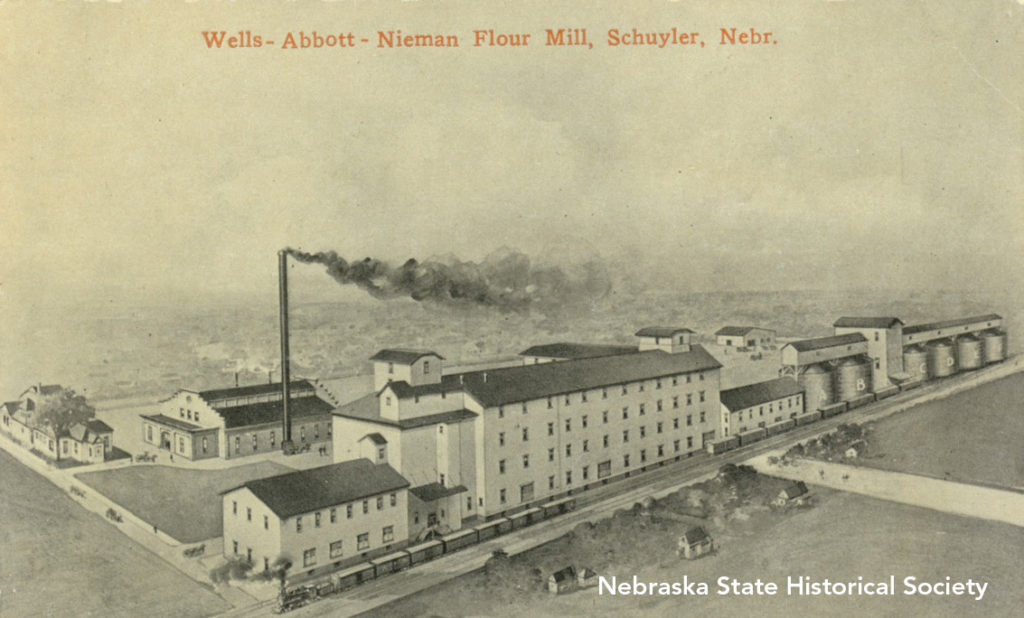 The Schuyler Mill in its heyday. RG3466.PH4-6
The Schuyler Mill in its heyday. RG3466.PH4-6
During the late nineteenth and early twentieth centuries more than five hundred flour mills were built in Nebraska. Most were relatively small, serving mainly local customers. A few produced for the commercial market, such as the Wells, Abbott, and Nieman Mill at Schuyler, once claimed as the largest flour mill west of the Missouri River. Although the mill had its origins as a water-powered mill built by N. W. Wells on Shell Creek, the business moved to Schuyler in 1882 so as to be located on the railroad. A new, larger mill, featuring steel rollers powered by a 175 horsepower steam engine, was constructed. Costing some $100,000, the mill was one of the first in Nebraska to substitute steel rollers for stone burrs to grind the grain. During its first year of operation, the mill produced 553 boxcar loads of flour. By 1900 the mill was producing a thousand barrels of flour every day and shipping its products all over the United States and to Germany, England, and Finland. Its flour was marketed under the “Puritan Flour” trademark. The mill was gradually expanded until its structures stretched for a block and a half along the Union Pacific tracks. In total, the mill could store nearly 250,000 bushels of grain. During its peak year, 1916, the mill did nearly $1.1 million worth of business in three months. By 1920 the mill employed more than 120 workers and was valued at $900,000. It was producing three thousand barrels of flour during each twenty-four hours of operation. Its fortunes were soon to decline, however, when foreign markets were lost after the end of World War I and the price of wheat dropped. In the ensuing trade panic, many flour purchase contracts were cancelled, and the mill was forced to sell immense stocks of wheat below cost, forcing it into receivership in 1921. Not until 1923 did the mill resume production, now under new ownership. It continued to operate until 1930 when the Great Depression again sent it into receivership and the mill closed. On the afternoon of October 7, 1933, the Schuyler mill, with the exception of a concrete elevator and steel grain bins, was destroyed by a massive fire. The cause was attributed to sparks issuing from a railroad locomotive moving railcars that ignited a bird’s nest in a mill cupola. An estimated half a million gallons of water were poured on the fire, which prevented its spread to nearby residential areas. Although there were no injuries or deaths, the loss exceeded $400,000. Because the mill had been standing idle, it was not covered by insurance. The financial setbacks, followed by the fire, put an end to what had once been a thriving part of Schuyler’s economic infrastructure. Welcome to our new weekly series, “Timeline Tuesday.” Every Tuesday, we’ll post a brief Nebraska history story. The late Jim Potter, NSHS historian and Nebraska History Associate Editor, authored these columns, which are also printed in newspapers around the state.



